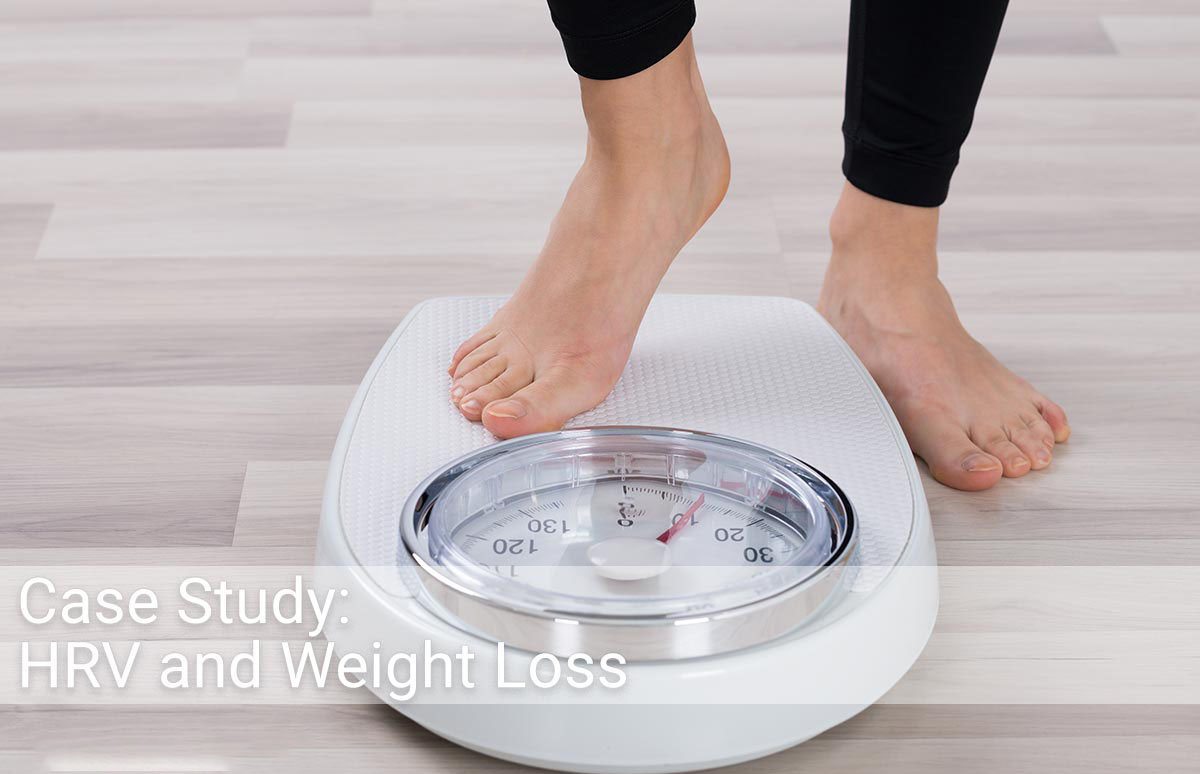I was called in to help with a case of a 42-year-old woman who was struggling to lose weight. No matter what her doctors, dietitians, or personal trainers tried in order to help her tackle her weight, she continued to maintain or gain weight. No one in her health support team could figure out the underlying cause of her weight gain.
The quality of her diet and her exercise intensity and frequency varied greatly. Throughout the different phases of exercise and diet, she saw no improvement. She was having depressive episodes regularly, stemming from significant family issues, that were causing high levels of fatigue. Other than those issues, she was in good health and had a good family health history.
When I was able to sit down with her after a week of collecting HRV data, it was easy to see that she had a low total HRV value compared to her demographic. Her HRV also had large fluctuations from day to day (a high Coefficient of Variation). High Coefficient of Variation values mean that the body is experiencing large swings between stress and recovery states. Unless you are undergoing a targeted training program, high Coefficient of Variation values are not desirable.
After a week of collecting HRV data, it was easy to see that she had a low total HRV value compared to her demographic. Her HRV also had large fluctuations from day to day (a high Coefficient of Variation). High Coefficient of Variation values mean that the body is experiencing large swings between stress and recovery states.
Through my initial assessment, the cumulative stress from work and home was taking a toll on her, causing these dramatic stress and recovery phases that did not allow her body to put needed resources towards optimizing health. She was open to making lifestyle changes but they always took a back seat when her life got busier and the focus on her health diminished. This resulted in further weight gain and a continuing sense of frustration.
The first step to addressing her weight and health concerns was for our team to have a consultation with everyone on her health team to update her medication and supplementation and remove all unnecessary items that just added to her sense of stress. During that time, we set small dietary and fitness goals that were easy for her to accomplish, no matter her work or family commitments. We focused on the amount of food she was eating and added a power walk into her schedule everyday. I have found from working with numerous patients that setting small manageable goals and milestones relieves some stress from an already stressful scenario and makes it easier for people to adhere to the plan, see progress, and fuel motivation.
Through my initial assessment, the cumulative stress from work and home was taking a toll on her, causing these dramatic stress and recovery phases that did not allow her body to put needed resources towards optimizing health.
As we created consistency in her diet and exercise, along with the updates to her medication and supplements, we started seeing a significant increase in the consistency of her HRV, a lower Coefficient of Variation, and improved maintenance of her weight. In our second meeting, I suggested that she go back to her personal trainer two times per week, making sure it aligned with days and times she could confidently commit to. We also consulted with her dietitian regarding her dietary choices to ensure they would support her increased activity and health requirements.
This went on for about 3 months – slowly setting goals, increasing her exercise, tweaking her medications, supplements and diet, and using HRV as our guide to monitor the changes to ensure we were increasing her HRV score and health numbers. When I saw her at a monthly follow-up after 4 months of working together, she looked like a different person. She had a huge smile on her face and it seemed like there was a weight lifted off of her shoulders. She weighed in and had lost 8 pounds in one month – the most weight she had lost after years of trying! Her HRV score had increased to normal ranges and was more consistent which reflected the consistency of all the positive lifestyle changes she had made.
It has been proven that obesity is correlated with low HRV values and we know that accumulated chronic stress not only increases disease risk but it also causes weight gain. If you or your clients are struggling to lose weight, HRV is a valuable tool that can help guide you through the weight loss process by helping you identify lifestyle stressors to avoid. These stressors can manifest through emotional, physical, dietary, environmental, and other pathways. HRV analysis can also help you realize the underlying health effects that different decisions you are making can have on your overall progress, and help you set goals based on your absolute HRV compared to your demographic and your relative HRV trends.
It has been proven that obesity is correlated with low HRV values and we know that accumulated chronic stress not only increases disease risk but it also causes weight gain.
No matter what the underlying cause and roadblocks may be, using objective data like HRV can help guide you or your clients towards achieving their health and fitness goals. This increases both motivation and accountability that helps ensure continual progress.
Using objective data like HRV can help guide you or your clients towards achieving their health and fitness goals.
